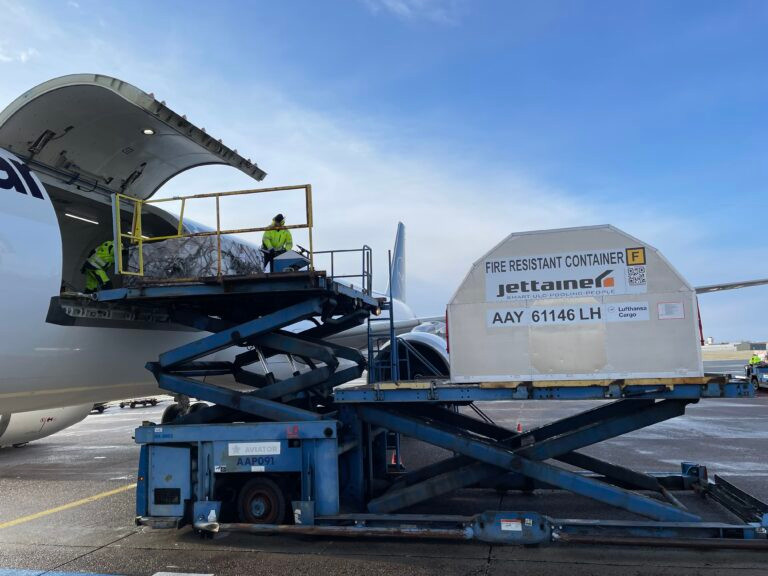The European airfreight market in 2024 is undergoing mixed developments marked by evolving demand patterns and operational shifts, significantly shaped by trends in pharmaceutical and medical equipment transportation, which continue to drive demand on the outbound segment.
On the inbound side, the growth is largely driven by the increased e-commerce traffic, which takes up a lot of capacity both on the belly part of legacy carriers and on pure cargo planes.
Moreover, the thriving European automotive industry also relies heavily in air cargo for efficient logistics, helping support market growth in the region.
“e-commerce will continue to be a dominant driver of airfreight, with demand increasing for fast, cross-border deliveries. Air cargo hubs will need to enhance efficiency through digital platforms, safe and smooth interface with customs and automated systems to remain competitive. Growth in pharmaceuticals and perishables means we have to focus on creating more capacity within the cool chain segment,” Lars Gotfredsen Senior Air Cargo Manager, explained.
Strategic approach
CPH is seeking to brand itself as the preferred Cargo Hub of Northern Europe, currently handling the largest air cargo tonnage in the Nordics of any airport.
The airport’s proximity to Northern Europe and the Baltics makes it an ideal hub for airfreight, connecting Scandinavia, the Baltics, and Northern Germany. The region boasts well-developed infrastructure, with Sweden nearby and a population of 10.7 million within a four-hour drive and 4.5 million within a two-hour drive from the airport.
Also offering shorter transit times for cargo arriving from or departing to Asia and the U.S., particularly benefiting time-sensitive shipments like pharmaceuticals and fresh fish, CPH is emerging as an attractive location for express carriers and e-commerce logistics.
“During Covid-19, we saw a general decrease in our volumes, as much of the Scandinavian goods bypassed CPH, due to a lack of network and capacity. Much of our overseas network is now restored and we see volumes growing at the same rate,” Gotfredsen outlined.
“We are still challenged with a lack of direct capacity to and from Asia, which we are very aware of and are trying to restore. In 2023 we thus had 281 thousand tonnes, where 2024 seems to be somewhat higher.
“Up to and including September, we are 19.6 percent above the 2023 level. If we look at the last 12 months, we have had a growth of 26.1 percent (ACI) figures, which puts us close to top ten among the airports in Europe (this without the largest pure cargo airports).”
Regulations and developments
Customs import control system two and regulations such as the EU’s Emissions Trading System (ETS) and the Carbon Border Adjustment Mechanism (CBAM) are tightening environmental requirements. Airfreight carriers must monitor and report carbon emissions, leading to additional operational costs and administrative complexity.
“We are working on sustainable logistics solutions, such as reducing carbon emissions through the use of electric ground service equipment and planning for future integration with sustainable aviation fuels (SAFs). Net zero airport and ground transport in 2030,” Gotfredsen outlined.
“CPH is supporting Danish research, innovation, growth, jobs and export potential within green fuels.
“By improving efficiency, a future platform can help reduce fuel consumption and carbon emissions associated with cargo handling and transportation outside the airport.””
CPH has in close dialogue with a terminal handler and customs worked on ensuring a digital infrastructure aligned with EU and global trade regulations.
“Technology is transforming the airfreight sector in Europe by introducing automation, AI, and digital solutions that streamline operations and improve sustainability. In the upcoming years B2C will grow a lot and have a huge impact on how the community have to deal with interfaces to customs and other authorities,” he highlighted.
“The support of the digitisation at our terminal handlers and in our community is in high focus. We are looking at considering several different options for platforms to generally make daily life at the airport more transparent and flexible. Slot bookings, smoother transit of goods and better integration into our stakeholders is essential for our future development for efficiency. A digital platform automates many manual processes involved in cargo handling, such as truck slot booking, truck manifests, and documentation. This reduces human error and speeds up operations.”
In recent years, many airports have experienced restrictions being imposed on night operations, which most often affect the cargo segment on pure cargo planes.
“We are very aware of our neighbours and local communities and do everything to reduce inconvenience in connection with our freight operations,” Gotfredsen continued.
“At CPH, we have been working for a year on a project which will try to reduce noise at night. The project, in its simplicity, is about getting the pilots to take off the planes at night in such a way that it creates the least nuisance and noise for our neighbours.
“At the same time, we as an airport benefit from the fact that our traffic can take off and land from the water side which minimises the inconvenience of having to cross residential areas. Adding to this we also have we also have a ban on certain types of aircraft which generally do not comply with our noise reduction policy.”





